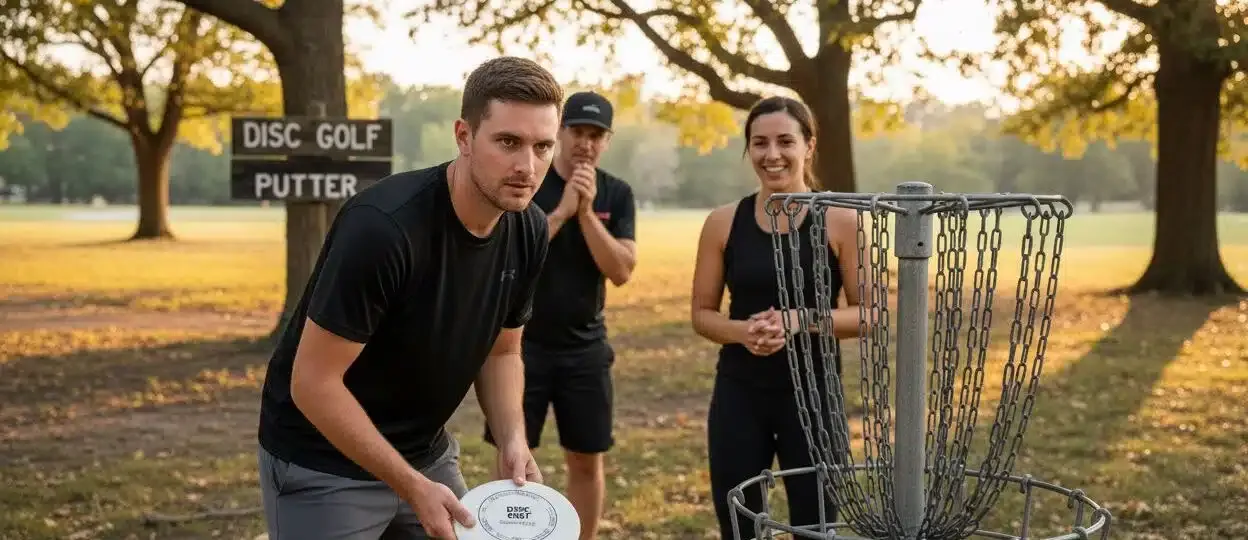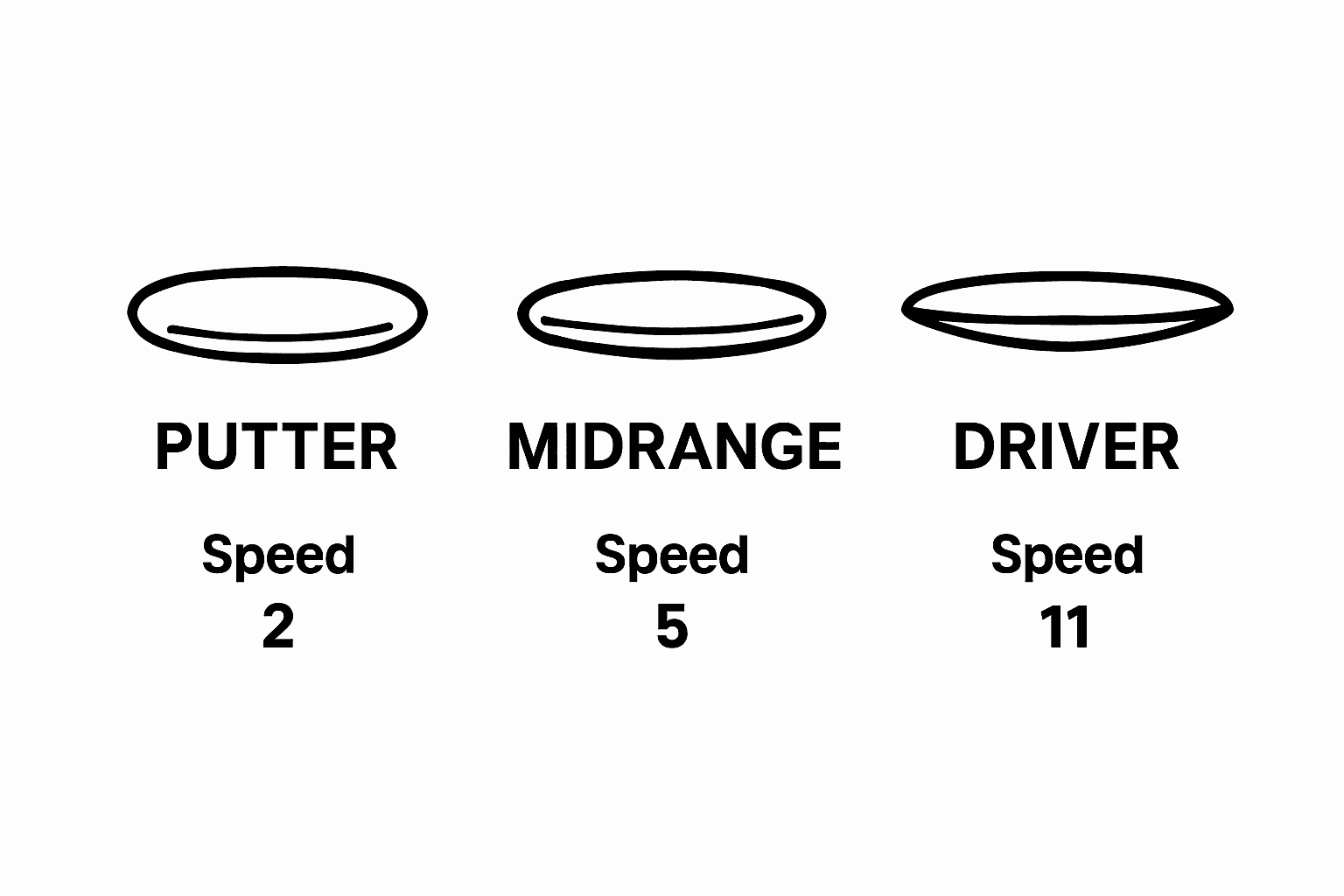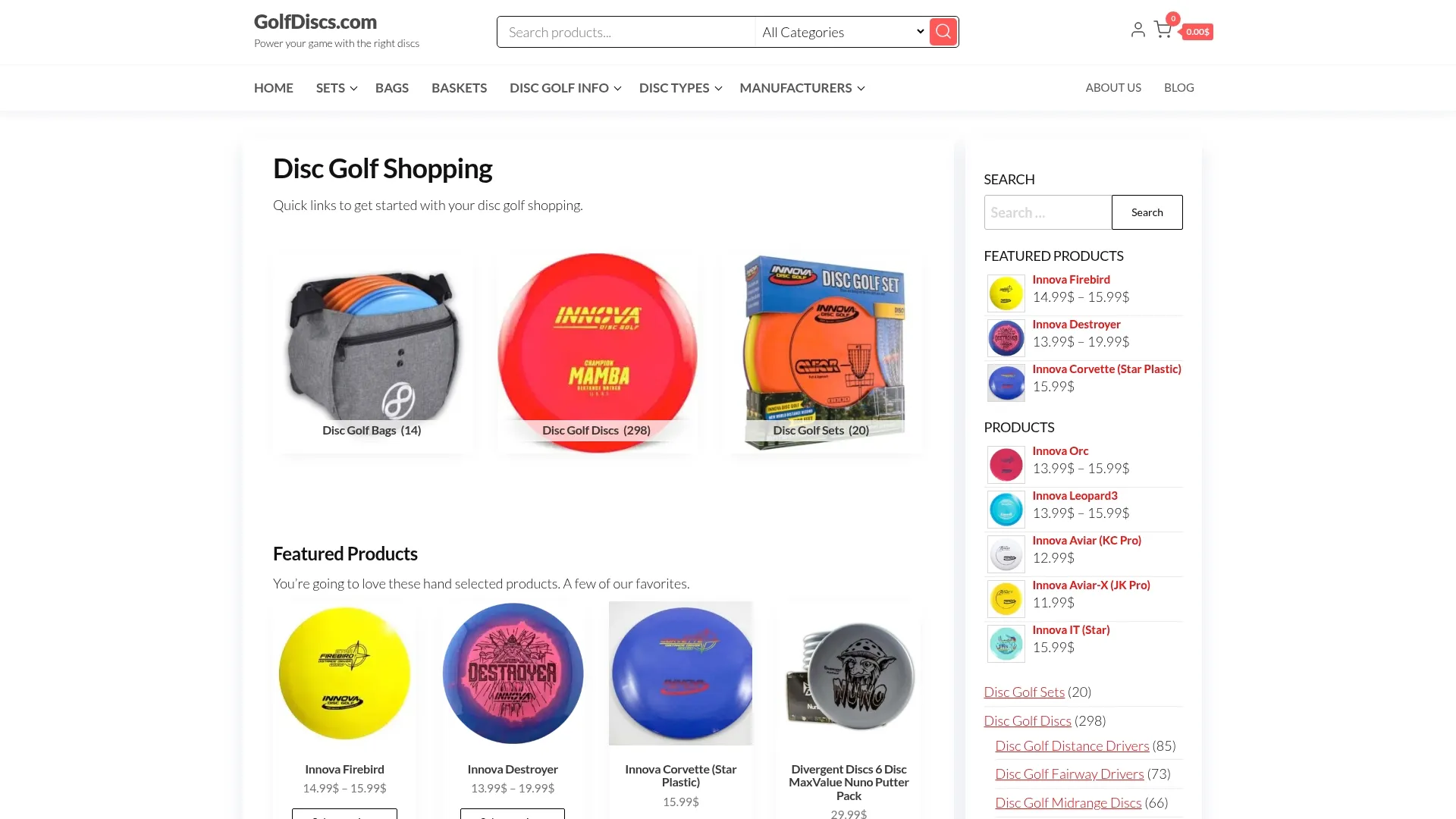
What is a Disc Golf Putter? Understanding Its Role
Disc golf might look simple when you watch someone toss a disc into a metal basket, but the details matter more than most people think. Take this for example. Around 40 percent of all disc golf throws are made with a putter right near the basket. Most people assume the biggest difference comes from long, flashy drives across the fairway. But the truth is, the humble putter is where games are won and lost. This small disc holds the power to change your scorecard faster than any other tool in your bag.
Table of Contents
- Defining A Disc Golf Putter: What Is It?
- The Importance Of A Putter In Disc Golf
- How A Disc Golf Putter Works: Mechanics And Design
- Key Features And Characteristics Of Putters
- Selecting The Right Putter For Your Game
Quick Summary
| Takeaway | Explanation |
|---|---|
| Disc golf putters are essential for scoring. | Putters are the key discs used for precise shots near the basket, impacting overall game performance significantly. |
| Choosing the right putter improves consistency. | Selecting a putter that matches your throwing style can lead to better accuracy and lower scores. |
| Mastering putting requires practice and technique. | Developing nuanced throwing techniques and understanding disc characteristics can enhance putting skills greatly. |
| Putters are specialized for short distances. | They are specifically designed for controlled, accurate throws within 30 feet of the basket, differing from other disc types. |
| Grip and release mechanics affect performance. | The design of putters impacts grip comfort and consistency in release, essential for making successful shots. |
Defining a Disc Golf Putter: What Is It?
A disc golf putter is a specialized disc designed for short-distance throws and precision shots near the basket, primarily used during the final stages of completing a hole. Unlike other disc types like drivers or midrange discs, putters have unique characteristics that make them crucial for scoring in disc golf.
To help you quickly compare the primary disc types used in disc golf, the table below highlights key differences between putters, midrange discs, and drivers mentioned in the article.
| Disc Type | Edge Shape | Typical Speed (Flight) | Main Use Case | Rim Thickness |
|---|---|---|---|---|
| Putter | Blunt, rounded | 3-4 | Short, precise shots near the basket | Thick, rounded |
| Midrange Disc | Moderately rounded | 4-6 | Controlled, mid-distance throws | Medium |
| Driver | Sharp, pointed | 7-14 | Long-distance throws (drives) | Thin, sharp |

Anatomy and Design of a Disc Golf Putter
Putters are typically characterized by their blunt and rounded edges, which allow for more controlled and predictable flight paths. These discs are generally smaller and have a flatter profile compared to other disc types, enabling players to achieve more accurate and consistent releases. The design prioritizes stability and minimal fade, which helps golfers make precise shots into the basket.
Key design features of disc golf putters include:
- Slower flight speeds (typically 3-4)
- Heavier weight ranges (between 150-180 grams)
- Minimal aerodynamic profile
- Thick and rounded rim for better grip
Purpose and Strategic Importance
In disc golf, putters serve a critical role beyond just throwing. They are instrumental in both putting attempts and approach shots within 30 feet of the basket. Professional and amateur players carefully select putters that match their throwing style and provide consistent performance. Learn more about choosing the right putt and approach disc to understand the nuanced selection process.
Mastering putting techniques requires understanding how disc characteristics influence shot accuracy.
A well-chosen putter can significantly reduce stroke count and improve overall game performance, making it an essential tool for disc golfers at all skill levels.
The Importance of a Putter in Disc Golf
A putter represents the most critical tool in a disc golfer’s arsenal for completing holes and maintaining consistent scoring performance. While drivers and midrange discs get significant attention, the putter is where precision and finesse truly determine a player’s success.
Scoring and Game Strategy
In disc golf, approximately 40% of all throws occur within putting distance, making these specialized discs paramount to overall game performance. Players who excel at putting can significantly reduce their total strokes and maintain lower scores. The ability to confidently throw accurate, short-distance shots directly impacts tournament outcomes and recreational play alike.
Key strategic advantages of mastering putting include:
- Reducing overall stroke count
- Minimizing potential scoring errors
- Building consistent throwing mechanics
- Developing mental composure under pressure
Technical Precision and Skill Development
Putters require exceptional technical control compared to other disc types. Players must develop nuanced throwing techniques that account for subtle variations in release angle, power, and disc trajectory. Explore techniques for improving disc golf throwing accuracy to understand the intricate skills required.
Professional disc golfers invest significant practice time specifically on putting techniques, recognizing that small improvements in this discipline can translate into substantial competitive advantages. The putter represents more than just equipment it is a precision instrument that demands respect, practice, and continuous refinement.
How a Disc Golf Putter Works: Mechanics and Design
Understanding the intricate mechanics of a disc golf putter reveals why these specialized discs perform so effectively in short-distance throwing scenarios. The design principles behind putters focus on creating predictable, stable flight paths that maximize accuracy and control.
The following table summarizes the key physical and performance features that define disc golf putters, supporting your understanding of how each attribute affects gameplay.
| Feature | Description |
|---|---|
| Edge Shape | Blunt and rounded for controlled flight |
| Diameter | Compact (typically 21-22 cm) |
| Weight Range | 150-180 grams |
| Flight Speed | Slow (rated 3-4) |
| Rim Profile | Thick and rounded for grip comfort |
| Aerodynamic Profile | Minimal, for predictable short-range performance |
| Material | Premium plastic polymers for grip and durability |
Aerodynamic Characteristics and Flight Behavior
Putters are engineered with unique aerodynamic properties that distinguish them from other disc types. Their blunt, rounded edges and minimal rim depth create a slower, more controlled flight profile. Learn more about disc golf flight dynamics to comprehend how subtle design elements impact disc performance.
Key aerodynamic features that influence putter performance include:
- Low-speed stability
- Minimal lateral movement
- Predictable descent angles
- Reduced wind sensitivity
Grip and Release Mechanics
The physical design of disc golf putters directly impacts grip comfort and release consistency. Manufacturers carefully craft putter surfaces with varying textures and rim configurations to enhance player control. Thicker rims provide more grip surface, allowing players to generate precise throwing techniques with minimal effort.
Professional disc golfers understand that a putter’s performance is not just about its physical design, but also about how seamlessly it integrates with individual throwing styles. The best putters feel like natural extensions of a player’s throwing motion, enabling consistent and repeatable shots that minimize scoring variability.
Key Features and Characteristics of Putters
Putters in disc golf are highly specialized equipment with nuanced design elements that set them apart from other disc types. Understanding these distinctive characteristics helps players select the most appropriate putter for their individual throwing style and course conditions.
Physical Construction and Materials
Disc golf putters are typically constructed from premium plastic polymers that offer superior grip and durability. Manufacturers develop multiple plastic grades that provide varying levels of flexibility, wear resistance, and tactile feedback. Discover more about specialized disc design to understand the intricate engineering behind these precision instruments.
Key physical characteristics include:
- Compact diameter (typically 21-22 cm)
- Heavier weight range (150-180 grams)
- Blunt, rounded leading edge
- Relatively flat profile
Performance Attributes and Variation
Putters exhibit remarkable diversity in their flight characteristics, with subtle design variations producing significantly different performance outcomes. Some putters are designed for straight trajectories, while others incorporate slight fade or turn tendencies. Advanced players often maintain multiple putters to accommodate different throwing techniques and course challenges.
The most successful disc golfers recognize that a putter is not just a tool, but an extension of their personal throwing technique. Selecting the right putter involves understanding individual mechanics, preferred release angles, and the specific demands of different putting scenarios.
Selecting the Right Putter for Your Game
Choosing the perfect disc golf putter is a nuanced process that involves understanding personal throwing mechanics, skill level, and specific course challenges. The right putter can dramatically improve scoring consistency and overall performance.
Evaluating Personal Throwing Style
Players must critically assess their individual putting technique and physical characteristics when selecting a putter. Explore comprehensive disc selection strategies to understand the intricate process of matching equipment to personal capabilities.
Key considerations for putter selection include:
- Grip comfort and hand size
- Throwing stance and release angle
- Preferred plastic type and durability
- Typical putting distance range
Matching Putter to Skill Level and Technique
Beginners typically benefit from more stable putters with predictable flight paths, while advanced players might prefer putters with subtle movement characteristics. Professional disc golfers often carry multiple putters, each designed for specific scenarios such as headwind puts, uphill approaches, or challenging terrain conditions.
Understanding that a putter is more than just a piece of equipment it is a precision instrument that requires careful selection and consistent practice is crucial. The most successful disc golfers view their putter as an extension of their physical technique, investing significant time in finding and mastering the perfect disc for their unique throwing style.

Take Control of Your Putting Game Today
Struggling to find the right disc golf putter for your throwing style? Many players feel frustrated when inconsistent putts and missed opportunities keep their scores higher than they want. Choosing a putter that fits your grip and technique is the first and most important step to building precision and confidence. If you want to feel the difference a top-quality putter makes, now is the perfect time to explore proven solutions trusted by beginners and pros alike.

Discover a complete range of high-performance putters and all the equipment you need at golfdiscs.com. Ready to refine your accuracy and raise your skill level? Visit our expert guide to choosing disc golf discs for helpful tips or see our featured Kestrel Putter Approach Disc to experience the difference a specialized disc can make—shop now and invest in your game’s future.
Frequently Asked Questions
What is a disc golf putter?
A disc golf putter is a specialized disc designed for short-distance throws and precision shots near the basket, used primarily during the final stages of completing a hole.
How does a disc golf putter differ from other types of discs?
Putters have a blunt and rounded edge that provides more controlled and predictable flight paths, slower flight speeds, and a thicker rim for better grip compared to drivers and midrange discs.
What are the key characteristics of a good disc golf putter?
A good disc golf putter typically features slower flight speeds (3-4), weighs between 150-180 grams, has a minimal aerodynamic profile, and a thick, rounded rim for enhanced grip and control.
How important is putting in disc golf?
Putting is crucial in disc golf, as approximately 40% of all throws occur within putting distance. Mastering putting can significantly reduce stroke counts and improve overall game performance.
